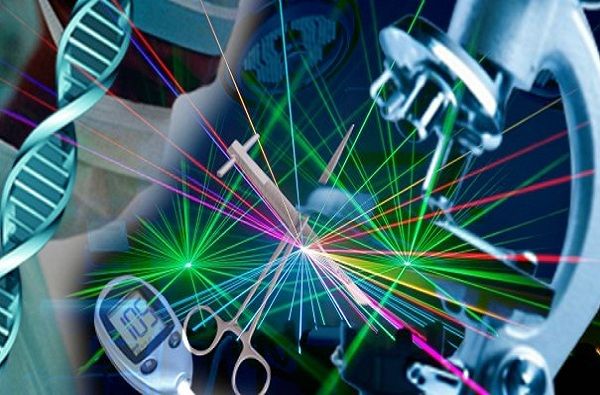Endurance lasers start R&D to investigate and evaluate the effects of low power laser radiation
EFFECTS OF THE LOW POWER LASER RADIATION OF BLUE, GREEN AND RED RANGES ON FREE RADICAL PROCESSES IN RAT BLOOD IN ENDOTOXIC SHOCK
T.V. Machneva, N.V. Kosmacheva, Yu.A. Vladimirov, A.N. Osipov Russian State Medical University, ul. Ostrovityanova, 1, Moscow, 117997 Russia; tel./fax: +7 (495) 4341174; e-mail: [email protected]
This study was performed to investigate the effects of the low power laser radiation in blue (441.2 nm), green (532.5 nm) and red (632.8 nm) wavelength range on free radical processes in experimental endotoxic shock in rats. The experimental model was produced by intraperitoneal injection of lipopolysaccharide B (25 mg/kg) (LPS). The following parameters were evaluated in the study: the chemiluminescent assay (to estimate the free radical production by blood leukocytes), nitro blue tetrazolium assay (to monitor the superoxide dismutase activity of plasma) and cis-parinaric acid fluorescence (to estimate the intensity of lipid peroxidation in erythrocyte membranes). It was found that the low power laser radiation had a significant impact on all the investigated processes in the animals both in the experimental and in the control groups (without an LPS injection). The most pronounced effects were observed in all groups of animals subjected to the low power laser radiation: at the dose of 0.75 J/cm2 the green laser was the most effective, and at the dose of 1.5 J/cm2 the green and red lasers produced the greatest effects. The mechanisms of the observed phenomena are discussed.
“Biological effects of low-energy monochromatic lasers in the range of blue-green radiation”
Summary
The use of lasers in medicine stands apart from other numerous areas of technological applications of lasers. Medical laser technologies are characterized by versatility, diversity, and complexity. Laser medicine deals with the laser radiation effects on various organs and systems of the body as well as the organism as a whole. In addition, each body organ or system, in turn, has a complex structure.
The special properties of the laser beam make it possible to concentrate energy with strictly defined physical parameters and high potential of biological and therapeutic action on the surface of an object. This is what marks off the laser energy from the other forms of radiant energy.
The scientific explanation of the observed positive and negative effects of laser radiation on biological objects is still to be found. According to Yu.A. Vladimi-rov’s opinion from the Russian State Medical University (Moscow), “you can not properly treat a patient without understanding what is happening.”
The main problem making it impossible to explain in detail these observations is the absence of any substance that is obviously involved in these processes and effectively absorbs radiation. Despite the grey area of the radiation acceptor, the chemical mechanisms are assumed to be the basis of the laser radiation biological effects in biomedical theories.
While the use of red and infrared radiation for therapeutic and surgical effects on the body is rather well developed, the blue-green spectrum of laser radiation remains virtually unexplored.
In this regard, studies of the laser radiation effects on biological objects produced by low-energy monochromatic lasers in the range λ = 473 nm (blue) and λ = 514 nm (green) with a continuous type of radiation at a radiation power density of less than 0.5 W / cm2 are proposed.
When conducting the researches to clarify the parameters of the biological effect, it is proposed to use a polarizer and a light guide as additional equipment to the laser.
It is planned to research:
1.0. Models of
1.1. Cerebral swelling (toxic, compression, traumatic, ischemic)
1.2. Acute hypoxia and hypercapnia
1.3. Acute toxic hepatitis
1.4. Acute induced arthritis
1.5. Modification of drug dosage forms
2.0. Objects (animal organs)
2.1. Brain
2.2. Liver
2.3. Adrenal glands
2.4. Thymus
2.5. Spleen
2.6. Blood (hematological and biochemical parameters)
3.0 Methods
3.1. Morphological (macro and micro, morphometry)
3.2. Biochemical (enzymes, proteins, lipids)
3.3. Functional activity of the CNS
3.4. Determination of drug activity
3.5. Clinical
3.6. Electrophysiological
4.0 Linear animals
4.1. Rats
4.2. Mice
Estimated results. Specification of the biological effects and the mechanism of the effects of the laser radiation in the blue-green range at different intensities of the (total) exposure. Introduction of the results to the clinic and innovative projects.
